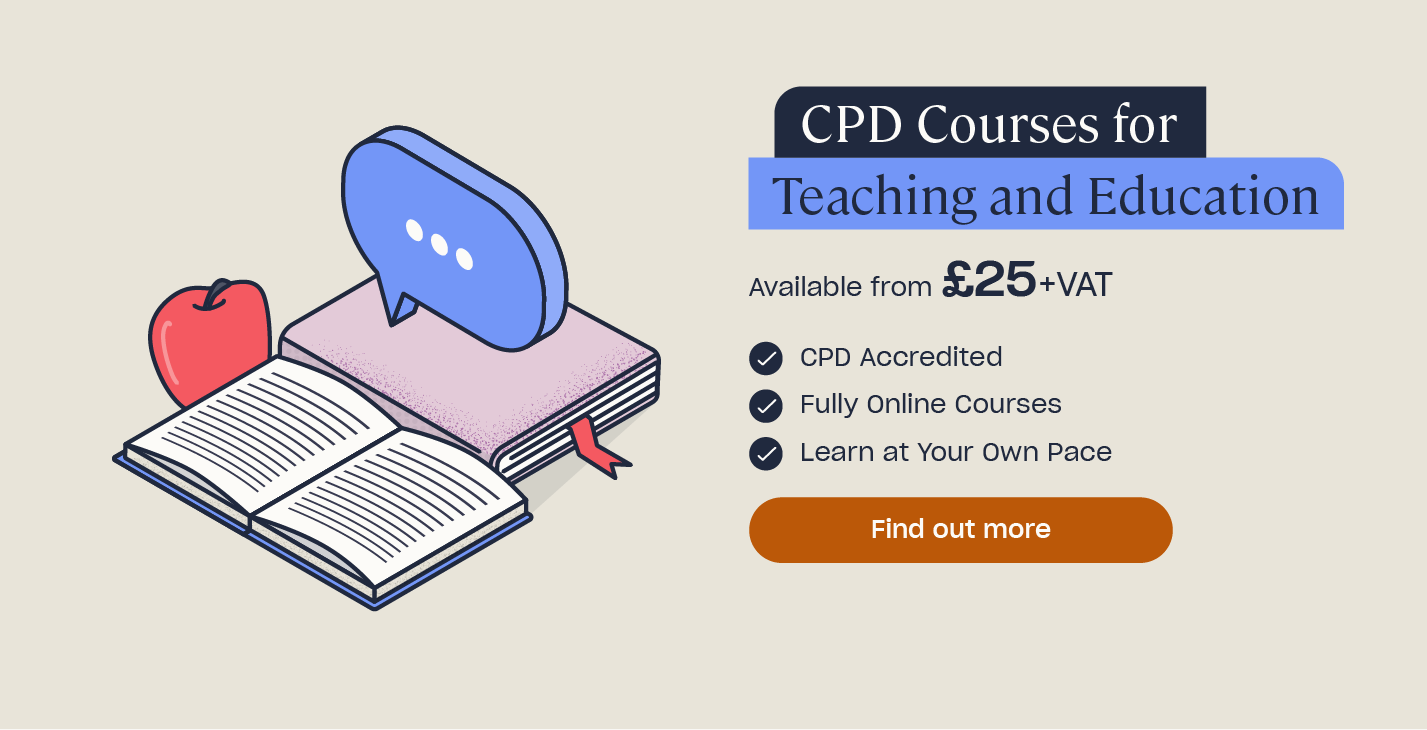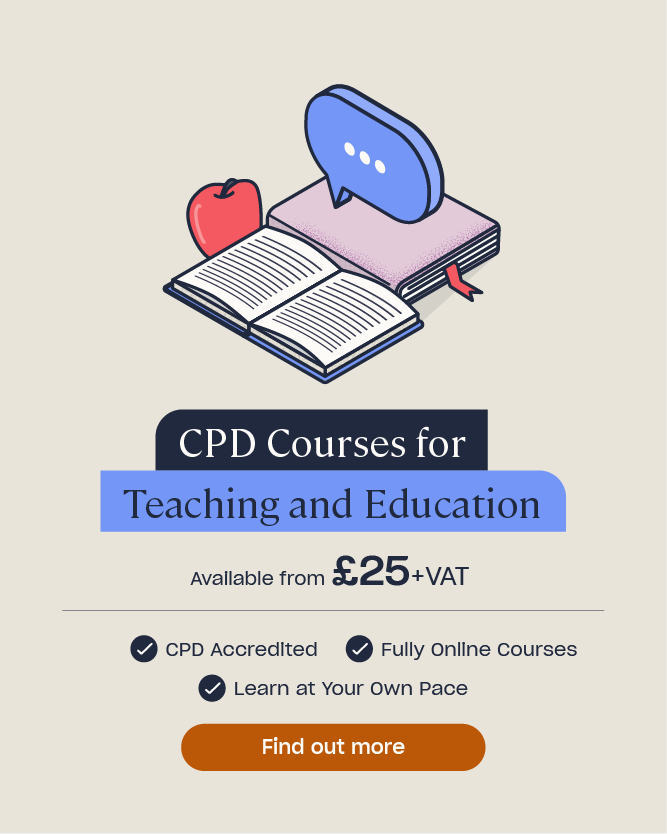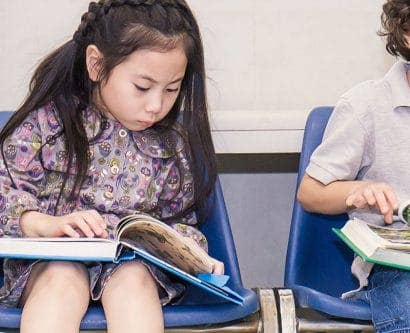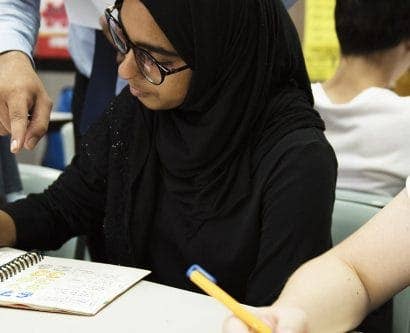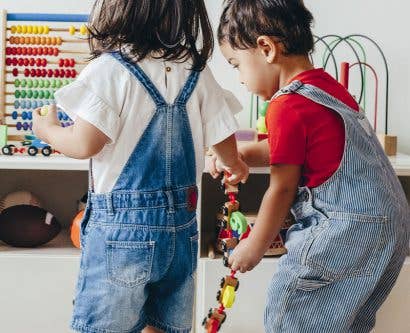Educational Bias: How to Avoid Bias in the Classroom
As human beings, we all carry biases which may cause us to unfairly relate more positively or negatively to particular groups or individuals. As education professionals, we need to make sure that those biases do not impact our practice and the way we interact with the children in our care. Educational bias is when bias affects children’s educational experiences and outcomes.
In this article, we will explore educational bias, the negative effects of bias and how it might manifest. We will consider some different types of biases and ways in which you can avoid educational bias in the classroom.
What is Educational Bias?
Bias occurs when we allow preconceived ideas relating to a person, a personal characteristic or group of people to influence the way that we think about, relate to and interact with them.

Bias can be negative or positive. It can make you favour someone or be prejudiced against them. For example, if you were at a social event and were introduced to someone who was wearing a T-shirt with the logo of your favourite band, you may view them more favourably than someone wearing a badge of a political party that does not align with your own views.
Biases can be based on many things, from someone’s external, physical appearance to the way they express themselves or the people that they are associated with.
Unconscious or Implicit Bias
These two terms both essentially mean the same thing. They refer to biases that we all hold that we are not even aware of. Our brains are designed to process information about people quickly and efficiently. This means that we often make snap judgements about people – informed by our own background, experiences and expectations, alongside cultural and social influences.
These ‘first impressions’ can have a lasting impact on how we treat others, so it is very important that we understand unconscious bias – both as individuals and as educators.
Educational bias is when biases are at play in educational settings. This can be at an whole-setting organisational level or at an individual level in terms of staff members’ own biases.
Education bias can take the form of a variety of different biases (some of which we will look at later in this article). The bias could, for example, be based on assumptions and preconceptions relating to:
- Gender.
- Race.
- Ethnicity or cultural identity.
- Religion.
- Socio-economic status.
- Special educational needs or disabilities.
- Family associations.
Negative Effects of Educational Bias
Educational bias, like all biases, can lead to stereotyping, prejudice and discrimination.
Schools have a legal duty to protect children from discrimination, under the Equality Act 2010.
The Act makes it unlawful for a school to discriminate against, harass or victimise a pupil or potential pupil.
This includes:
- In relation to admissions.
- In the way that it provides education for pupils.
- In the way that it provides pupils access to any benefit, facility or service.
- By excluding a pupil or subjecting them to any other detriment.
The Equality Act also protects those discriminated against through association or perception – for example, a pupil discriminated against due to a parent’s sexual orientation or due being perceived as following a particular religion.
In addition, the Teachers’ standards state that teachers must:
- Set high expectations which inspire, motivate and challenge all pupils.
- Promote good progress and outcomes by all pupils.
- Demonstrate consistently high standards of personal and professional conduct.
If educational bias goes unchecked or unchallenged, then schools and teachers will not be able to properly fulfil their professional duties and obligations. We need to actively promote equality, diversity and inclusion in the classroom and so therefore need to be aware of, and actively avoid, any educational bias – both conscious and unconscious.

Educational bias can lead to certain children or groups of children:
- Being subject to lower expectations.
- Achieving lower academic outcomes.
- Having policies, such as behaviour policies, applied inconsistently to them.
- Being more likely to be excluded from school.
- Experiencing discrimination within school.
- Feeling undervalued and underrepresented within the school community.
- Becoming disengaged from education.
Educational Bias Examples
In this section, we are going to look at some of the key types of education bias.
However, when considering any kind of bias, it is important to acknowledge that most children’s experience will be an intersectional one. So, for example, both a Black girl eligible for free school meals and a Gypsy Roma boy with SEND may be experiencing educational bias, but in different ways and with different biases as its root.
Gender Bias in Education
Gender bias can cause teachers and schools to treat genders differently, apply rules inconsistently and can cloud expectations.
Because gendered expectations are prevalent in society, we may not notice inconsistencies and inequalities that might be present in our practice.
Examples of gender bias might include:
- Not offering the same sporting and extracurricular opportunities to all genders.
- Expecting children to play in different ways – for example, expecting boys to be more boisterous and so perhaps sanctioning the same behaviour in girls.
- Expecting girls to be neater – in the presentation of their work or in terms of contributing to keeping the classroom tidier.
- Having different expectations in terms of commitment to their studies, handing homework in, completing revision, etc.
- Explaining behaviour that may constitute peer on peer abuse away, with attitudes such as ‘girls this age are mean to each other’ or ‘boys will be boys’ – and then not applying behaviour policies rigorously or consistently enough.
- Calling on boys more for contributions in class. Psychologist David Sadker, found that boys will often raise their hands in a more animated, aggressive manner, whilst girls will wait patiently. This can lead to an inequality in the opportunity to contribute. Indeed, this is one reason why a no-hand raising policy can be beneficial and other whole-class questioning techniques can be a fairer strategy in assessment for learning.
Statistics show a disparity in the academic performance of boys and girls, with girls consistently outperforming boys. For example, in the 2020/2021 academic year, 55.8% of girls achieved a grade 5 or above in GCSE English and maths compared to 48.2% of boys. However in 2022, the ONS reported that the gender pay gap was 8.3% for full time employees, indicating that girls’ academic advantage is not translating to the employment market.
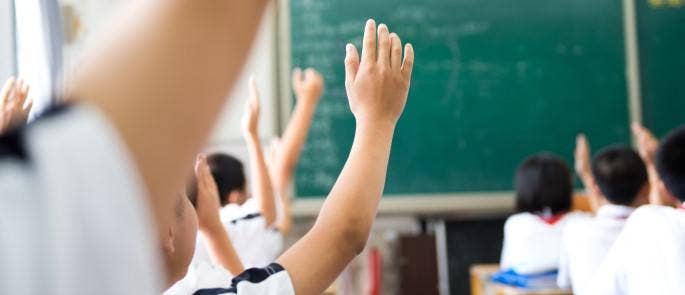
Racial and Ethnic Bias in Education
Education bias can also be based on assumptions and preconceived ideas (both conscious and unconscious) regarding a person’s race or ethnicity.
The Department for Education (DfE) publishes data relating to education outcomes, broken down into ethnic groups. Amongst others, this shows the following disparities:
- 83.8% of pupils from the Chinese ethnic group got a grade 5 or above – the highest percentage out of all ethnic groups.
- White Gypsy and Roma pupils (9.1%) were least likely to get a grade 5 or above, followed by traveller of Irish heritage pupils (21.1%) and Black Caribbean pupils (35.9%).
- White Gypsy and Roma pupils had the highest permanent exclusion rates in the 2020 to 2021 school year (18 exclusions per 10,000 pupils).
Some of the ways in which racial or ethnic bias in education might manifest include:
- Policies which disadvantage certain groups. For example, dress codes with guidelines for what constitutes acceptably ‘neat’ hair can inadvertently discriminate. A YMCA report found that 7 out 10 young Black people felt pressured to change their hair in order to appear more professional.
- Safeguarding and child protection duties not being properly fulfilled due to adultification bias, where certain children are not afforded the same notions of vulnerability and risk as others. (Although this is not exclusively linked to race there is a strong link. For more information, read our article, What is Adultification within Child Protection and Safeguarding?)
- Viewing children from certain backgrounds as more aggressive and applying behaviour policies inconsistently. This can also be linked to adultification bias, where certain children are seen as more responsible. The same YMCA report found that 50% of young black people thought the biggest barrier to attaining success in school was their teachers’ perceptions of them.
- Assuming that children with certain accents or English as a second language should be placed in lower attainment groups or sets.
- Assuming cultural expertise – for example calling on a child to talk about a specific religious festival when they have not put themselves forward to do so, and might not celebrate that festival.
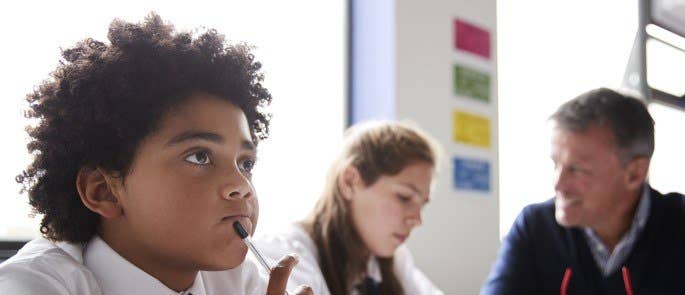
Socio-Economic Bias in Education
A 2022 study, published in the British Journal of Educational Psychology, gave teachers identical pieces of work to mark but attributed it to either a child of a lower socio-economic status or a higher socio-economic status. The results found that teachers gave lower marks to the work they believed came from a pupil of lower socio-economic status.
This suggests that to some extent educational bias could be in part responsible for those children achieving lower academic outcomes. DfE data shows that in 2020/2021, pupils eligible for free school meals were less likely to get a grade 5 or above at GCSE than those who were not eligible. This was across all ethnic groups and genders.
Examples of socio-economic bias in the classroom might include:
- Placing children from lower socio-economic backgrounds, or those eligible for free school meals, in lower attainment groups.
- Assuming that lower socio-economic status equates to children having less cultural capital.
- Assuming that children from lower socioeconomic backgrounds will have less parental support, involvement or investment in education.
How to Reduce Bias in the Classroom
A single practitioner will not be able to eradicate educational bias, but you can take some positive steps to avoid educational bias in your own practice and in your own setting.
Reflective Practice
The first step to being able to avoid bias impacting our thoughts and actions is to honestly acknowledge the biases that we carry. This can be uncomfortable. As educators, we are committed to providing a high quality education for all students. In order to do so, it is essential to reflect on where we might be falling prey to educational bias.
As a first step, think about the following:
- Is your language always inclusive? Do you use expressions such as ‘Come on guys’ unthinkingly or do you unintentionally make presumptive statements such as ‘We celebrate Christmas because…’
- Do you apply any rewards and sanctions used in your setting equitably? Are there children that you will allow to call out more than others, for example? (Remember, however, that in the case of children with SEND you will need to make adjustments to your practice. Equitably does not always mean applying in exactly the same way.)
- Do you have lower expectations for some learners? What do you think is the root of that?
- Is your questioning in class allowing everyone to contribute and assess their learning? What could you do to improve this?
- Have past experiences with families or siblings influenced your view of pupils?
Reflective practice is essential to good teaching and can be a powerful tool in avoiding any unintentional educational bias.
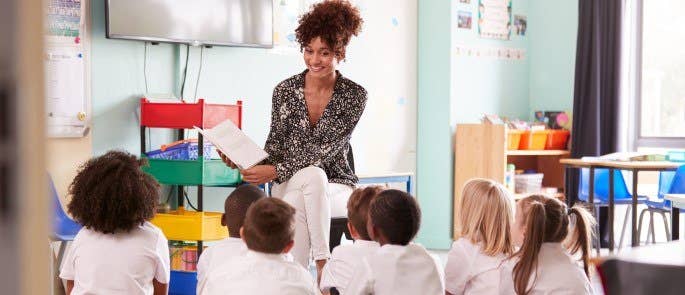
Representation
Being able to see elements of your own identity positively reflected in the school setting can be powerful in terms of creating a culture of inclusion. The more truly inclusive the culture, the less educational bias is likely to be present.
In order to maximise representation, you could:
- Audit your teaching and learning resources, as well as class and school displays, to make sure that you are providing representation of diversity and not perpetuating stereotypes. Each time you create or purchase a resource, or produce some imagery, ask yourself if it is inclusive. For example, art supplies for Early Years should include a full range of skin tone crayons.
- Ensure that important figures from different ethnicities, cultures and backgrounds, as well as LGBTQ+ figures, are represented in the curriculum – for example, those profiled in art, history, science and in English. Teach First’s Missing Pages Library provides useful book recommendations and a resource bank designed to improve diversity in English lessons.
- Consider representation in your staff and leadership team. Is your staff body diverse? For example, a 2020 UCL study found that in 46% of schools there are no teachers from an ethnic minority background. It is important that children see role models who share characteristics with them. Those responsible for recruitment should be aware of unconscious bias in recruitment and undertake unconscious bias training as necessary.
Policy and Procedure
Whenever conducting regular reviews of school policies and procedures, make sure that you try to view them through a bias-checking lens. By asking if a particular policy would disadvantage anyone, you can potentially uncover issues.
Pupil voice can be utilised to provide a learners’ view on policy. By making sure that you engage pupil voice in a way that is representative of the diversity of the student body, you can get a diverse range of perspectives. That way, you can see if the learners’ perceive something to be unfairly advantageous or disadvantageous to particular groups or individuals.
Transparent Marking
There are some steps you can take to try to ensure that your marking and assessment is not influenced by bias.
When setting pieces of work, it can be useful to provide a clear marking structure to students, detailing what you are looking for when you mark the piece of work. This not only helps them structure their work but you can then use this during marking, meaning every piece is considered against the same clear criteria.
You can also try to anonymise work before you mark it, so you do not attach that work to a particular student. This does have its disadvantages. Firstly, it is only practical if handwriting or presentation cannot be recognised. Also, formative marking should be personalised to the students’ learning journey – building on what has gone before and giving feedback on how to develop further.
However, although you would not want to mark every piece this way, it can be a useful reflective exercise. If, at the end of the exercise, you have graded the work and are surprised at what certain children have achieved, it might be worth considering if bias is influencing your marking usually.
Educational bias is something that all education professionals should be aware of. It can be uncomfortable to acknowledge bias, as it goes against the aims of educational practice, but it is essential that you do so. By being reflective and considering how educational bias can be avoided, the negative effects can be reduced. We hope you have found this article useful.
Further Resources:
- CPD Courses for Teachers
- How to Promote Equality, Diversity and Inclusion in the Classroom
- How to Promote LGBTQ+ Inclusive Education in Schools
- How to Create a Positive Learning Environment
- What is Inclusive Practice?
- Understanding the Importance of Motivation in Education
